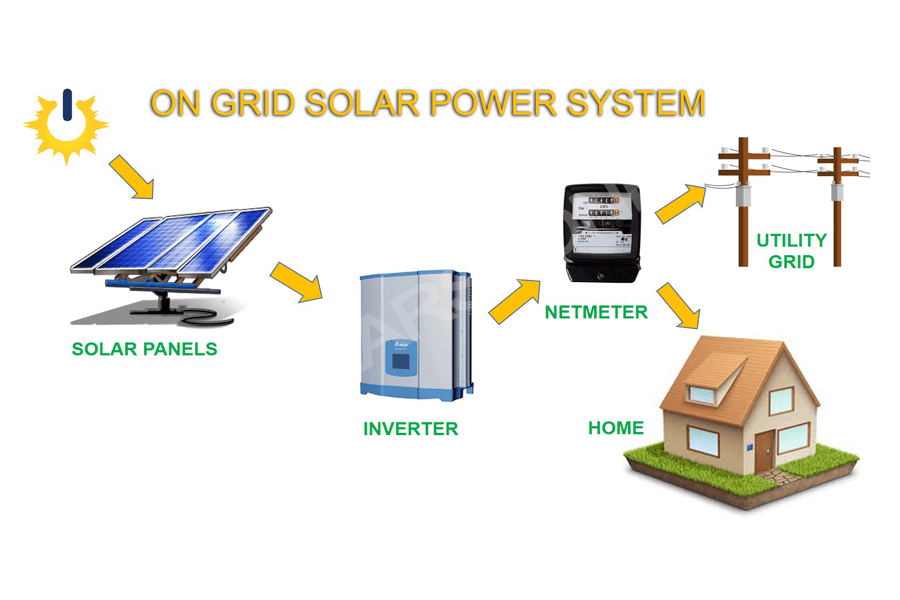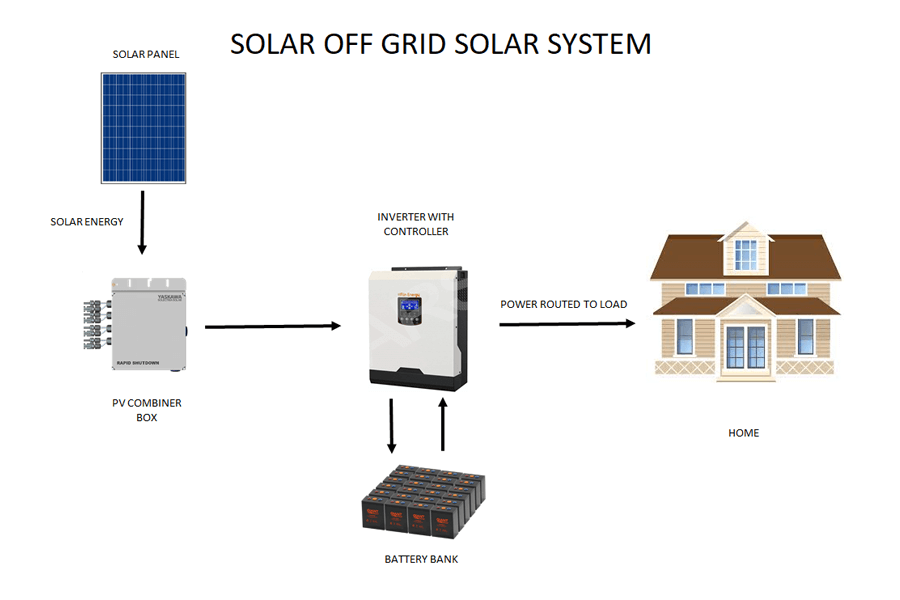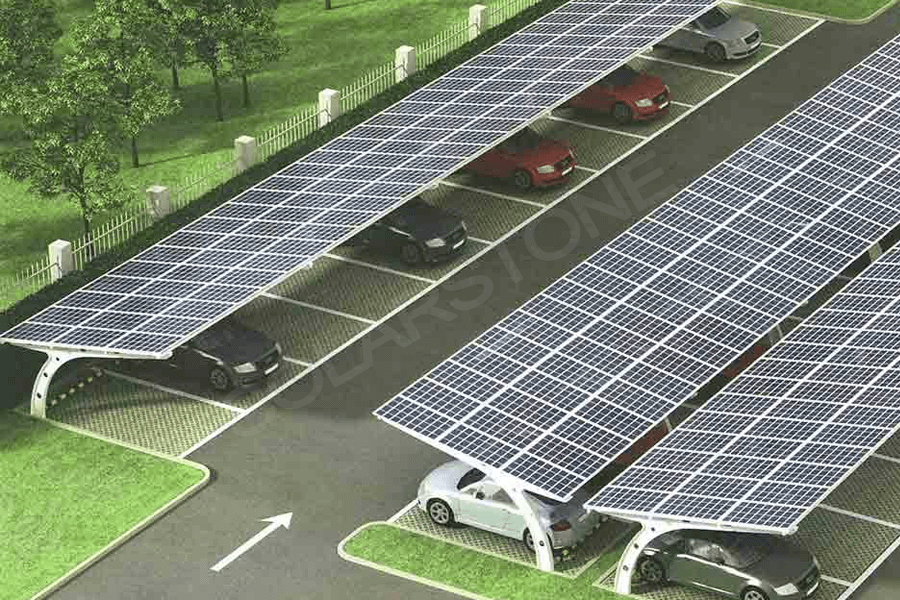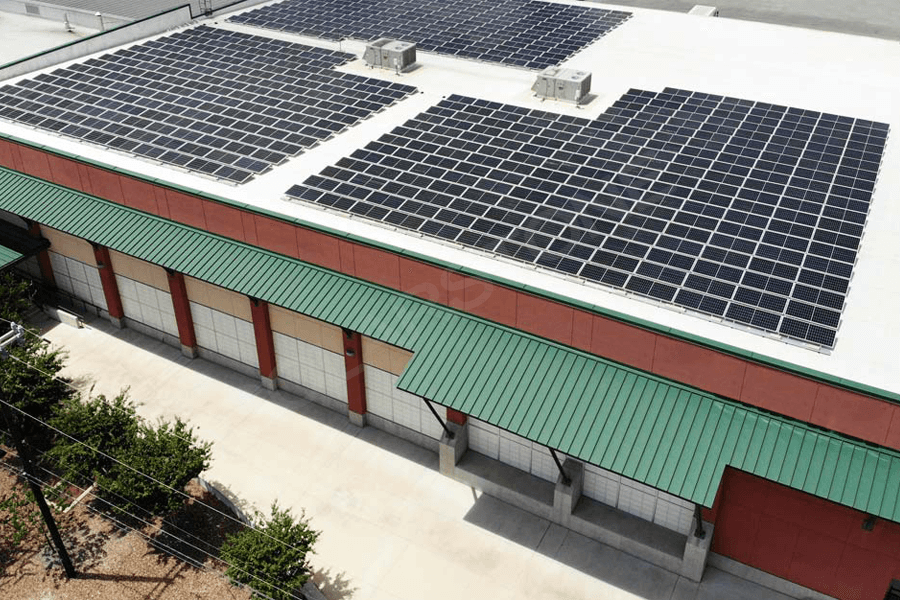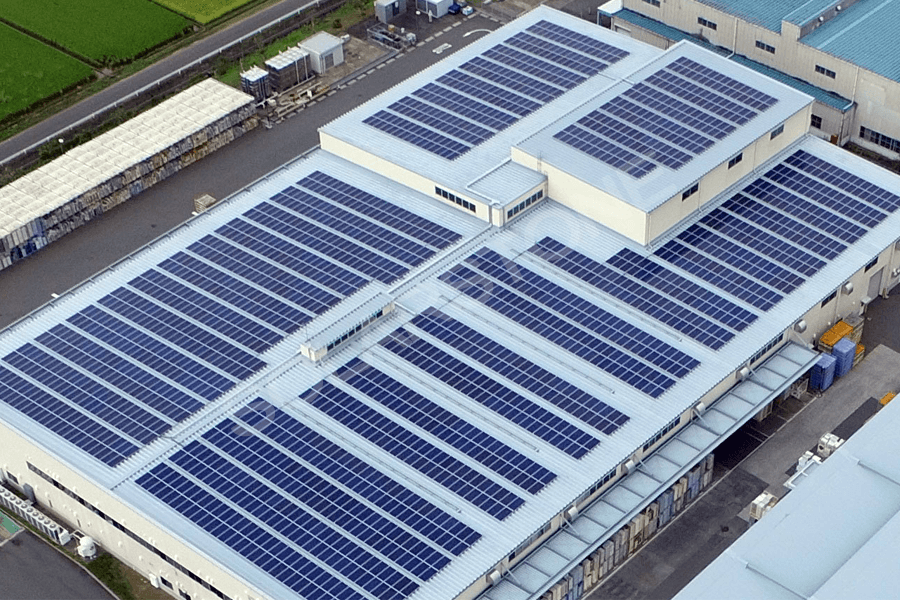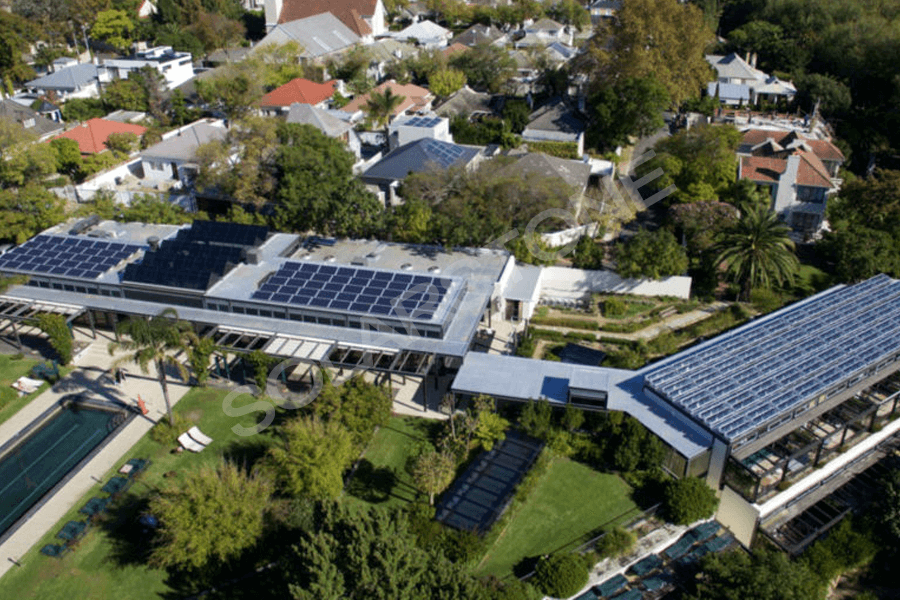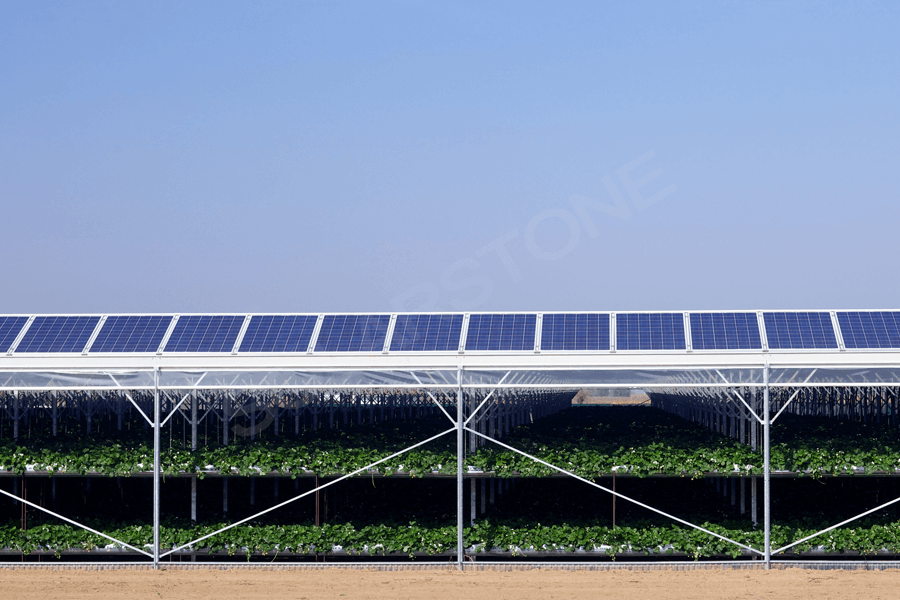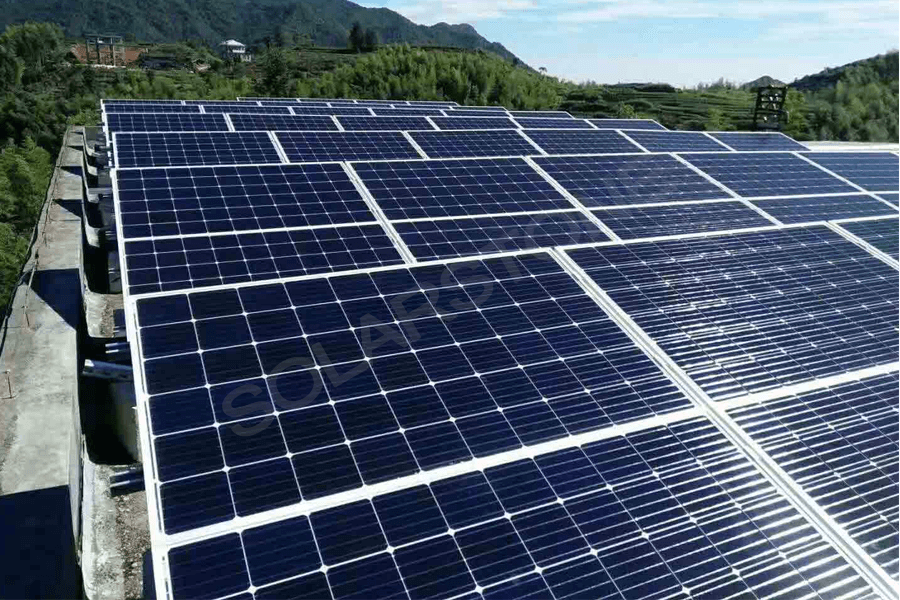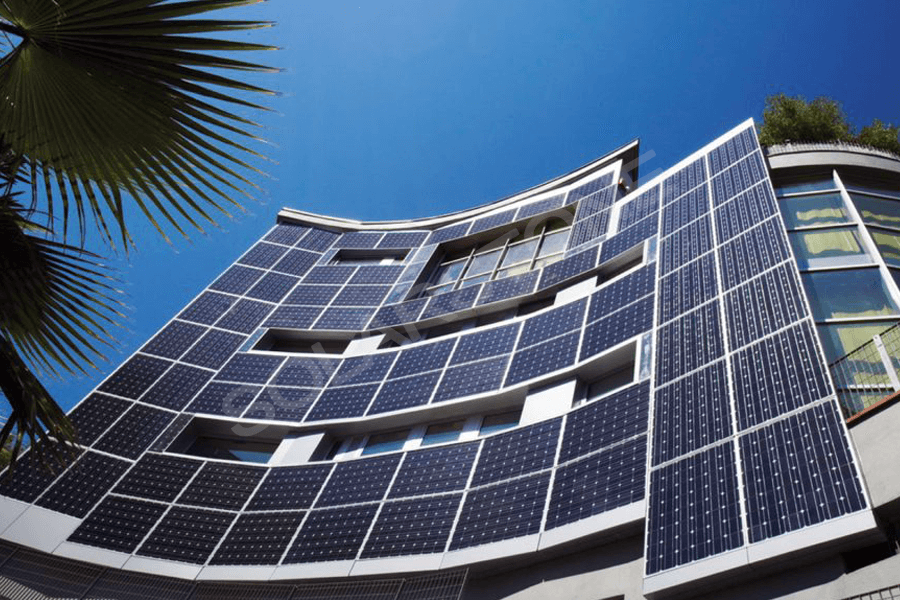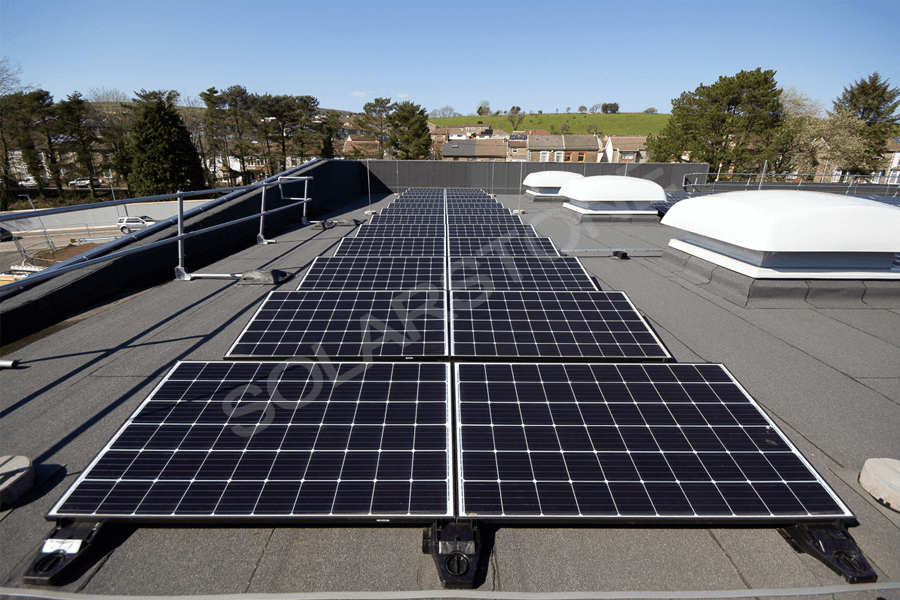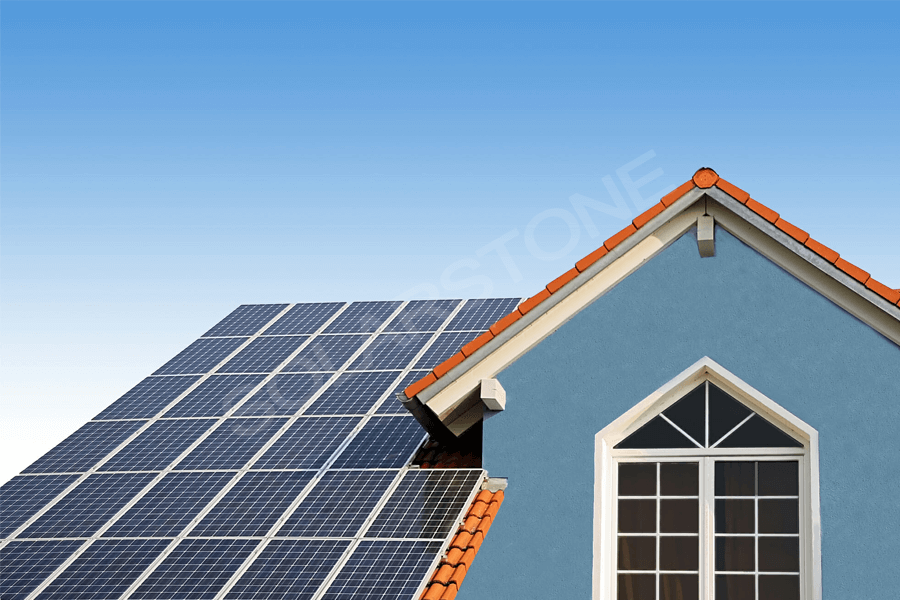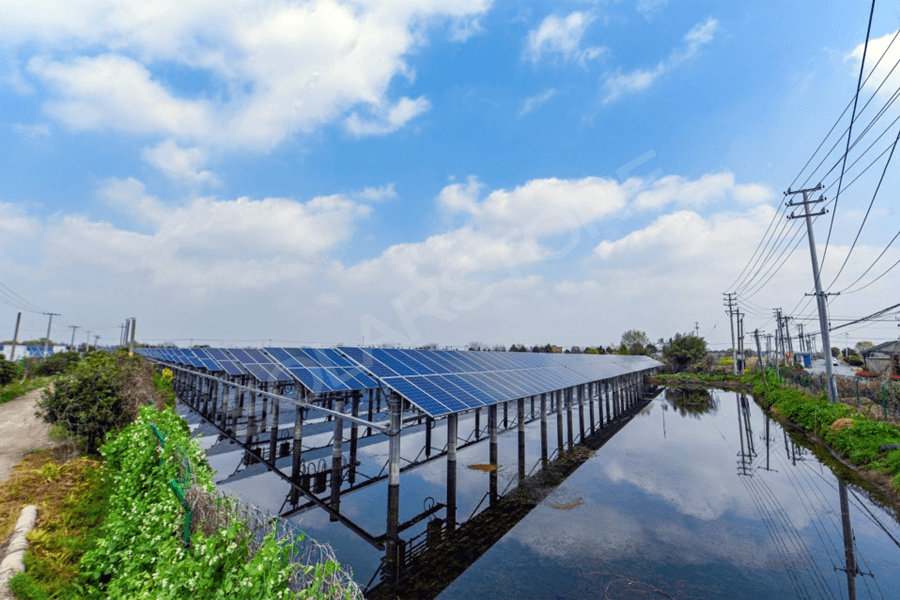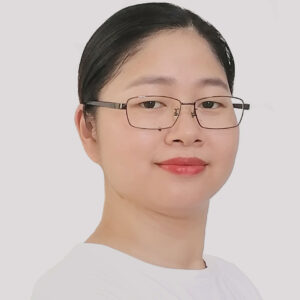1.What is photovoltaic power generation? What is distributed photovoltaic power generation?
Photovoltaic power generation refers to the power generation method that directly converts solar radiation into electric energy. Photovoltaic power generation is the mainstream of solar power generation. Therefore, now people often say that solar power generation is photovoltaic power generation.
Photovoltaic distributed generation is a new and promising way of comprehensive utilization of power generation and energy. It can not only effectively improve the power generation capacity of photovoltaic power stations of the same scale, but also effectively solve the problem of power loss in step-up and long-distance transportation.
2.What are the components of photovoltaic power generation system?
The photovoltaic power generation system is composed of photovoltaic array (the photovoltaic array is composed of solar panels in series and parallel), controller, battery pack, DC / AC inverter, etc. the core component of the photovoltaic power generation system is solar panels, which are encapsulated by solar cells in series and parallel, which directly converts the solar energy into electric energy.
The electricity generated by solar panels is direct current. We can use inverters to convert it into alternating current for use. We can also use energy storage devices such as batteries to store the electric energy and release it at any time as needed.
3.How much sunlight can we use? Can it become the dominant energy in the future?
The solar radiation received by the earth’s surface can meet 10000 times the global energy demand. The average annual radiation received by the earth’s surface per square meter varies from region to region, about 1000-2000kwh. According to the data of the International Energy Agency, the installation of solar photovoltaic systems in 4% of the world’s deserts is enough to meet the global energy demand. Solar photovoltaic has broad development space and great potential.
With the technological progress and large-scale application of photovoltaic power generation, its power generation cost will be further reduced, become a more competitive energy supply mode, gradually change from supplementary energy to alternative energy, and hope to become the leading energy in the future.
4.What are the application forms of distributed photovoltaic power generation?
Distributed photovoltaic power generation is mainly divided into three types: grid connected, off grid and multi energy complementary microgrid. Grid connected distributed generation systems are often installed near users. They are generally connected to medium and low voltage distribution networks for self use. When power generation is unable or insufficient, they purchase power from the grid, and sell power to the Internet when power is surplus.
Off grid distributed photovoltaic power generation system is often installed in remote areas and island areas. It is not connected with the large power grid and uses its own power generation system and energy storage system to directly supply power to the load.
The distributed photovoltaic system can also form a multi energy complementary micro power system with other power generation modes, such as water, wind, light, etc. it can not only operate independently as a micro grid, but also be integrated into the grid for networking operation.
5.What are the applications of distributed photovoltaic power generation?
The application occasions of distributed photovoltaic power generation system are mainly divided into two types:
First, it can be popularized in various buildings and public facilities to form a distributed building photovoltaic power generation system, and use various local buildings and public facilities to establish a distributed power generation system to meet part of the power demand of power users and provide production power for high energy consuming enterprises.
Second, it can be popularized in remote areas, islands and other low power and non power areas to form off grid power generation systems or micro grids. Due to the gap in economic development level, there are still some people in remote areas in the world who have not solved the problem of basic power consumption.
In the past, rural power grid projects mostly rely on the extension of large power grid, small hydropower, small thermal power and other power supply, so it is very difficult to extend the power grid, And the power supply radius is too long, resulting in poor power supply quality.
The development of off grid distributed generation can not only solve the basic power consumption problem of residents in areas with no power and little power, but also make clean and efficient use of local renewable energy, and effectively solve the spear and shield between energy and environment.
6.Which locations are suitable for installing distributed photovoltaic power generation system?
Industrial plants: especially in factories with large power consumption and expensive online power purchase fees, the roof area of the plant is usually large, the roof is open and flat, and it is suitable for the installation of photovoltaic arrays. Due to the large power load, the distributed photovoltaic grid connected system can be used for local consumption to offset part of the online power purchase, so as to save users’ electricity fees.
Commercial buildings: the effect is similar to that of the industrial park. The difference is that most commercial buildings are cement roofs, which is more conducive to the installation of photovoltaic arrays. Commercial buildings include commercial buildings, conference centers, office buildings, hotels and resorts. The power consumption is generally higher during the day and lower at night, which can better match the characteristics of photovoltaic power generation.
Agricultural facilities: there are a large number of available roofs in rural areas, including self owned houses, vegetable greenhouses, fish ponds, etc. rural areas are often at the beginning of the public power grid, and the power quality is poor. The construction of distributed photovoltaic system in rural areas can improve power security and power quality.
Municipal and other public buildings: due to unified management, relatively reliable user load and commercial behavior and high installation enthusiasm, municipal and other public buildings are also suitable for centralized and continuous construction of distributed photovoltaic.
Remote agricultural and pastoral areas and Islands.
7.What is a distributed photovoltaic power generation system combined with buildings?
Photovoltaic grid connected power generation combined with buildings is an important application form of distributed photovoltaic power generation at present. The technology has made rapid progress, which is mainly reflected in the installation mode combined with buildings and the electrical design of building photovoltaic. According to the installation mode combined with buildings, it can be divided into photovoltaic building integration and photovoltaic building addition.
8.What is the difference between the installation of photovoltaic arrays on the facade and on the roof of buildings?
The combination of photovoltaic array and buildings can be divided into roof installation and side facade installation. It can be said that these two installation methods are suitable for most buildings.
The roof installation forms mainly include horizontal roof, inclined roof and photovoltaic daylighting roof.
Among them, the light array on the horizontal roof can be installed at the best angle to obtain the maximum power generation, and conventional crystalline silicon solar panels can be used to reduce the investment cost of solar panels, with relatively good economic efficiency, but the aesthetics of this installation method is general.
Inclined roofs can be used to install photovoltaic arrays on the roofs due south, Southeast, southwest, east or west in the northern hemisphere. On the inclined roofs due south, they can be installed according to the best orientation or close to the best orientation.
Photovoltaic daylighting roof refers to the building component with transparent solar panels as the daylighting roof, which has good aesthetics and meets the needs of light transmission. However, the photovoltaic daylighting roof needs transparent solar panels, and the efficiency of solar panels is low. In addition to the transparency of solar panels, the daylighting roof component shall meet certain architectural requirements such as mechanics, aesthetics and structural connection, The cost of power generation is high.
Side elevation installation mainly refers to the way of installing solar panels on the south wall, west wall and east wall of the building. For high-rise buildings, the wall is the outer surface with the largest contact area with sunlight, and photovoltaic curtain wall is a common application method.
9.Can distributed photovoltaic grid connected systems be installed in agricultural greenhouses and fish ponds?
The temperature rise and thermal insulation of the greenhouse has always been a key problem perplexing farmers. The photovoltaic agricultural greenhouse is expected to solve this problem. Due to the high temperature in summer, many kinds of vegetables can not grow normally from June to September.
The photovoltaic agricultural greenhouse is like adding a spectrometer outside the agricultural greenhouse, which can isolate the red line and prevent too much heat from entering the greenhouse, In winter and night, it can prevent the light of the red band in the greenhouse from radiating outward, which has the effect of heat preservation. The photovoltaic agricultural greenhouse can supply the power required for lighting in the agricultural greenhouse, and the remaining power can be connected to the grid.
In the off grid photovoltaic greenhouse, it can be deployed with the LED system to block light during the day, ensure plant growth and generate power at the same time. The night led system shall be illuminated by day power.
Solar panels can also be erected in fish ponds, which can continue to raise fish. Solar panels can also provide good shielding for fish farming, which better solves the contradiction between the development of new energy and a large amount of occupied land. Therefore, distributed photovoltaic power generation systems can be installed in agricultural greenhouses and fish ponds.


